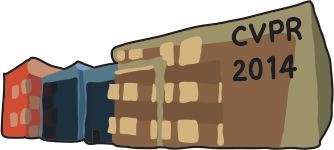-
Semantic Visual Understanding of Indoor Environments: From Structures to Opportunities for Action
AbstractWe present a two-layer representation of the locally sensed 3D indoor environment. Our representation moves one step forward from capturing the geometric structure of the environment to reason about the navigation opportunities for an agent in the environment. The first layer is the Planar Semantic Model (PSM), a geometric representation in terms of meaningful planes (ground and walls). PSM captures more semantics of the indoor environment than a pure planar model because it represents a richer set of relationships among planar segments. In the second layer, we present the Action Opportunity Star (AOS), which describes the set of qualitatively distinct opportunities for robot action available in the neighborhood of the robot. Our two-layer representation is a concise representation of indoor environments, semantically meaningful to both robot and to human. It is capable of capturing incomplete knowledge of the local environment so that unknown areas can be incrementally learned as observations become available. Experimental results on a variety of indoor environments demonstrate the expressive power of our representation.
Related Material
[pdf][bibtex]@InProceedings{Tsai_2014_CVPR_Workshops,
author = {Tsai, Grace and Johnson, Collin and Kuipers, Benjamin},
title = {Semantic Visual Understanding of Indoor Environments: From Structures to Opportunities for Action},
booktitle = {Proceedings of the IEEE Conference on Computer Vision and Pattern Recognition (CVPR) Workshops},
month = {June},
year = {2014}
}
These CVPR 2014 workshop papers are the Open Access versions, provided by the Computer Vision Foundation.
Except for the watermark, they are identical to the accepted versions; the final published version of the proceedings is available on IEEE Xplore.
Except for the watermark, they are identical to the accepted versions; the final published version of the proceedings is available on IEEE Xplore.
This material is presented to ensure timely dissemination of scholarly and technical work.
Copyright and all rights therein are retained by authors or by other copyright holders.
All persons copying this information are expected to adhere to the terms and constraints invoked by each author's copyright.

